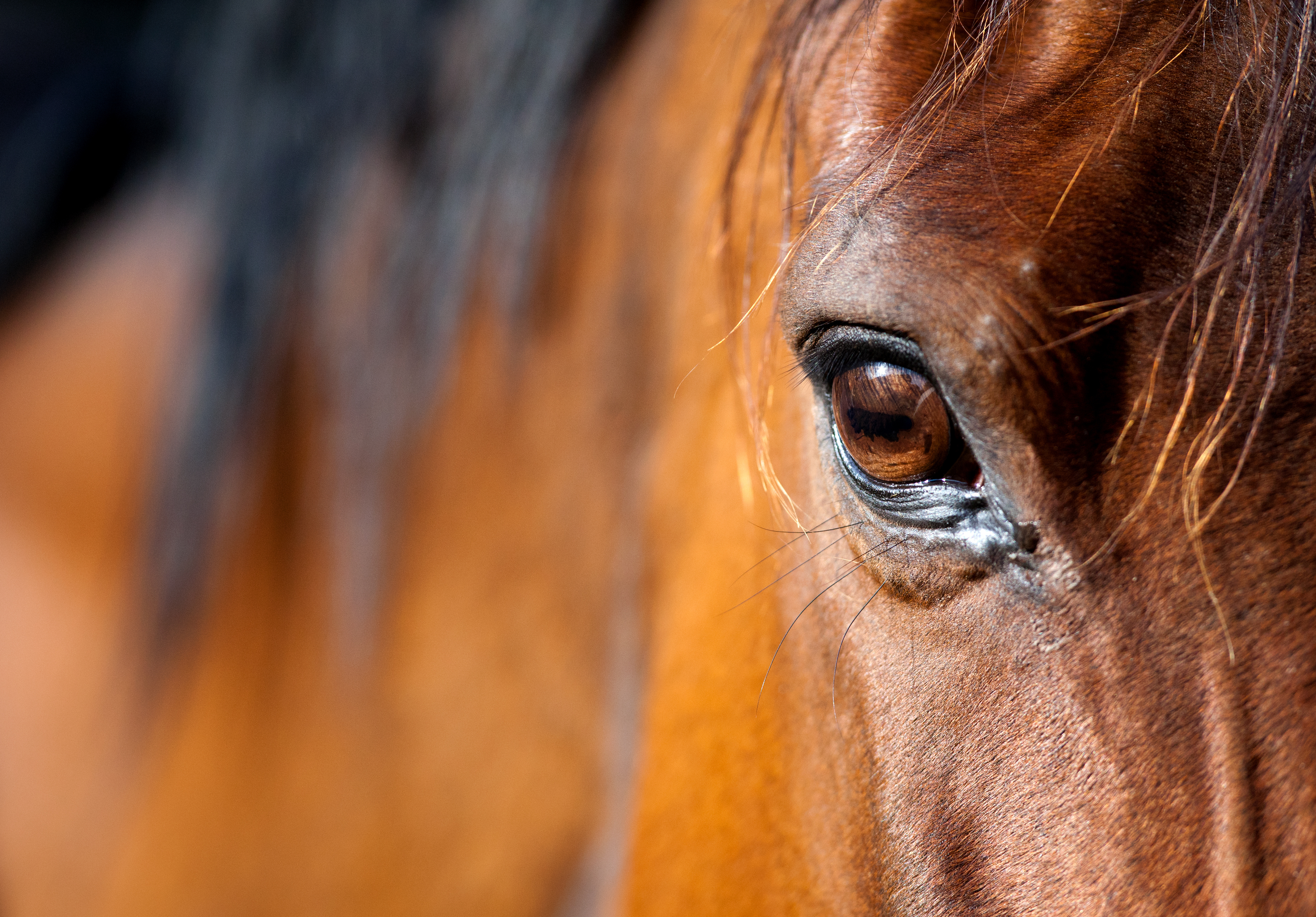Eyeballing conjunctivitis in horses
- March 4, 2024
- ⎯ Editors of EQUUS
When your horse has a swollen eye, it’s always cause for concern, but this time of year it may just be equine conjunctivitis (pinkeye), an easily treated bacterial infection.

Afflicted eyes often swell shut, with the bright pink conjunctiva (the mucous membranes that line the eyelid) appearing to ooze out between the lids. Remembering that your horse is likely to be touchy about having his eye examined, use the thumb and forefinger of one hand to gently spread the lids apart and inspect the eyeball itself for signs of trouble. A bright, healthy globe indicates that the problem is in the lids alone. Any abnormalities of the eyeball constitute an emergency situation, necessitating an immediate call to your veterinarian.
Equine conjunctivitis is caused when trauma to the tissues surrounding the eye opens the way for bacterial invasion. For instance, when face flies are attracted to the moisture around a horse’s eye, the horse rubs the area on his knee to rid himself of the irritation. The insects depart, but any bacteria they were carrying remain to be rubbed into the eyelid’s sensitive membranes. Windblown dust also leads to eye irritation, rubbing and subsequent infection. Unlike pinkeye in cattle, equine conjunctivitis is not an airborne contagion, but horses can contract particularly virulent strains from each other through direct contact.
Click here to learn how to recognize the subtle signs of eye trouble.
Treatment for conjunctivitis is topical antibiotic eye ointment, which you can get from your veterinarian. If your horse has recurring eye infections, you may want to keep ointment on hand for use at the first signs of irritation. With treatment and removal of the irritant, the swelling of conjunctivitis should subside in about two days. In insect season, equip your horse with a fly mask and keep him sheltered during dust storms and daylight hours, when face flies are active.
Don’t miss out! With the free weekly EQUUS newsletter, you’ll get the latest horse health information delivered right to your in basket! If you’re not already receiving the EQUUS newsletter, click here to sign up. It’s *free*!





